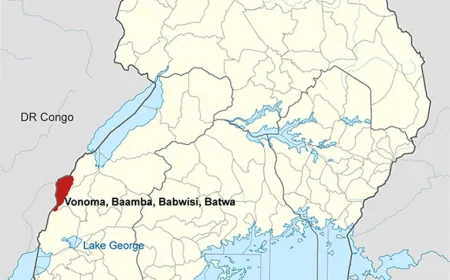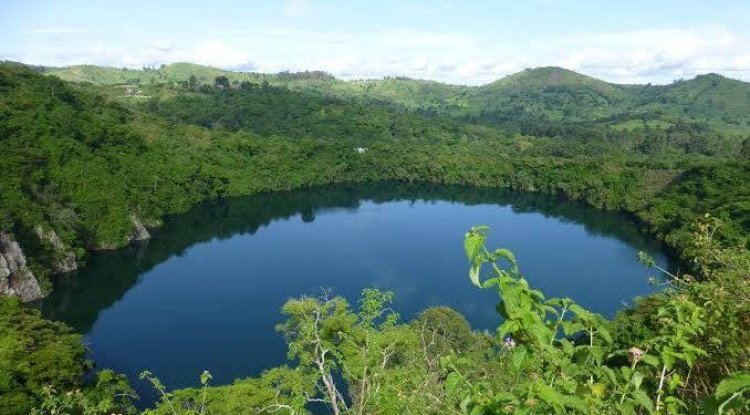Banyala: The Forgotten Tribe of Uganda
The Banyala (ethnonym: Banyala; singular Munyala) are a Bantu ethnic group native to Buganda, a subnational kingdom within Uganda.

Imagine living in a land that was once yours but now belongs to another kingdom. Imagine being a minority among many other tribes, some of whom have their origins in other countries. Imagine being a descendant of both conquerors and conquered, of both allies and enemies. This is the story of the Banyala , a tribe in Uganda that has a rich and complex history but is often overlooked and misunderstood.
The Banyala (ethnonym: Banyala; singular Munyala) are a Bantu ethnic group native to Buganda, a subnational kingdom within Uganda. They stay in an area called Bugerere in Kayunga District, near the Nile River-Lake Kyoga basin. They share a common ancestry with the Baruuli, who live in Nakasongola District. The Banyala are not a homogeneous group but rather the result of intermarriages between Banyoro and Baganda, two rival kingdoms that fought over Bugerere for centuries. The Banyala have their own language, culture, and traditions, but they also have influences from both Buganda and Bunyoro. They have faced many challenges and conflicts, both internally and externally, but they have also shown resilience and adaptation.
In this article, we will explore the history, culture, and identity of the Banyala , a tribe that deserves more recognition and respect in Uganda and beyond.
History
The history of the Banyala can be traced back to the pre-colonial era, when Buganda and Bunyoro were the dominant kingdoms in the region. Bugerere, the land of the Banyala , was originally part of Bunyoro, but it was captured by Buganda in the late 18th century. The Banyoro who remained in Bugerere were assimilated into the Baganda culture, while some of them fled to other areas.
The Banyala were initially called Bagele, meaning porters and builders, because they were employed by the Banyoro kings to carry their luggage and construct their palaces. One day, one of the Bagele was roofing Kabalega’s house, the king of Bunyoro, and to ensure that it did not leak, he urinated on top of it to see whether his urine would sip through. The king’s guards saw him, arrested him, and punished him. The Bagele became the Banyala, meaning “those that urinate. ”
The Banyala were under the rule of Bunyoro until the late 19th century, when a rebellion led by Namuyonjo, a son of Kamurasi, the king of Bunyoro, changed the course of history. Namuyonjo was unhappy with his father’s treatment of him and his mother, who was a Muganda. He allied with Mwanga II, the king of Buganda, who welcomed him because he was at war with Bunyoro. Mwanga gave Namuyonjo control over Bugerere, which was still predominantly occupied by Banyoro. Namuyonjo did not occupy Kayunga at the time because the area was infested with dangerous flies known as embwa. It was not until Buganda, helped by the British, flushed out the flies, that people started living in Kayunga. Namuyonjo proceeded to Budali, Bugembo, Kitwe, and Bbale villages. At Misanga, he met Koojo, a self-imposed leader. Since Koojo was not from the royal family, he was forced to surrender his leadership mantle to Namuyonjo without any resistance.
Kabaka Chwa II's chief hunter, Kyesswa Mulondo, paid a visit to Bugerere and enjoyed it. Mulondo requested and obtained a plot of land from the Kabaka, placing him at Nateta. Mutundi claims Mulondo drove the Mpindi tribe from Nateta to Kyaggwe, infuriating Namuyonjo.
This resulted in a fight over territorial boundaries. As the dispute grew, Kabaka Chwa II, with the assistance of his regents (Stanislas Mugwanya, Zakaria Kisingiri, and Apollo Kaggwa), broke the impasse.
Mulondo's property spanned from Nakyesa to Maligita in Kangulumira, and Namuyonjo's border stretched from Nakyesa to Galiraya on the banks of Lake Kyoga. Although it is unclear how big Mulondo's land was, Namuyonjo is supposed to have received 11.5 square miles.
Namuyonjo's bloodline has at least 12 successors, according to Buganda elder Charles Ssenkungu.
He adds that both Namuyonjo and Mulondo's Baganda subjects married Banyoro women, resulting in the contemporary Banyala.
The Banyala are closely related to the Baruli of Nakasongola, who are also descended from Banyoro and Baganda through marriages. In 1980, the Baruli and Banyala formed an organization.
However, in 2003, when the Baruli attempted to include Banyala under the Sabaruli, the Banyala broke out and formed an autonomous association, according to Ssenkungu.
Types of Banyala
The Banyala are classified into three categories. The "Bagele," "Bagambayi," and "Batumbugulu". The "Bagele" are Banyala who served under Bunyoro in Bugelele. When Bugelele joined Buganda, the "Bagambayi" brought "Namuyonjo" with them. The "Batumbugulu" are the Banyala who arrived in Bugelele long after Namuyonjo deposed "Mukongo.".
What's Your Reaction?
 Like
1
Like
1
 Dislike
0
Dislike
0
 Love
1
Love
1
 Funny
0
Funny
0
 Angry
0
Angry
0
 Sad
0
Sad
0
 Wow
1
Wow
1













































































